It started last winter when two kittiwakes – Arctic birds seldom seen in Florida – showed up at the Sunshine Skyway Fishing Pier State Park. Birders from across the state flocked to the pier to see a “lifer” without trekking through snow or climbing the steep cliffs where they nest. When one of the kittiwakes apparently swallowed a hook, there was no clear way for birders to help. The kittiwake died.
A few months later, signs warning anglers not to cut the line and the phone number for the pier’s “bird man” are impossible to miss. Mike Patterson patrols in a distinctive jacket, talking to fishermen about ways to minimize the possibility of entangling birds, or helping untangle those birds caught in fishing lines. “Mike has always loved birds,” says Jamie Foster, whose family runs the pier concession for the state parks department and promoted Patterson to a full-time position to help save birds.
“Little by little, we’re getting the message out,” says Sandy Reed, a board member of Tampa Audubon Society who is spearheading the bird protection committee. Thirty volunteers have been trained on how to release hooked birds and ongoing training sessions are planned for the winter months.
And although attention is focused on the Skyway piers, fishing line entanglement is an issue everywhere – it kills birds, dolphins, turtles and manatees. “We even get calls from people about owls hanging by fishing line in trees along the Hillsborough River,” Reed said.
[easymedia-gallery med=”1107″ size=”200,200″]Tracking Changes
It’s hard to track data because there is no baseline to measure it against, but Patterson thinks the number of entangled birds is dropping. “We started out seeing eight to 10 a day, but talking to people is helping and we’re only seeing two to four per day now.”
He’s able to untangle and release about 90% of the birds he captures, but a lot depends upon how long they’ve been entangled, how deep the hook is set and whether the bird has developed an infection. Sick birds can be taken to vets or rehab facilities, but avian specialists are in short supply, Reed notes.
“The best thing is to avoid hooking them in the first place – but unhook them as quickly and as gently as possible if one is caught,” she said.
Anyone can catch and untangle a bird, said Ann Paul, regional coordinator for Audubon’s Florida Coastal Islands Sanctuaries. “The hardest thing for most people is getting over their fear of the bird. Fishermen unhook sharks and catfish every day – birds are certainly easier to deal with than sharks.”
The Audubon classes are specifically designed to help people overcome those fears and provide basic bird-handling skills, Reed adds. “Any rescue is always dependent upon the comfort level of the rescuer.”
To learn more, visit www.tampaaudubon.org where you can also sign up for classes on rescuing birds. Skyway volunteers must be registered through the state parks department.
[su_note note_color=”#dbed97″]7 Ways to Save a Bird
 If you hook a bird, don’t cut the line. The trailing line will become tangled and the bird will die. Instead, gently reel it in, cut the barb off the hook, and release it. (Visit www.tampaaudubon.org for step-by-step handling directions on how to release a pelican, the bird most likely to be tangled in fishing gear.)
If you hook a bird, don’t cut the line. The trailing line will become tangled and the bird will die. Instead, gently reel it in, cut the barb off the hook, and release it. (Visit www.tampaaudubon.org for step-by-step handling directions on how to release a pelican, the bird most likely to be tangled in fishing gear.)- Don’t feed waterbirds anything that draws them into contact with people and fishing tackle.
- Properly dispose of excess and unwanted fishing line.
- Never leave a fishing pole or line unattended.
- Keep your bait bucket covered. Dispose of excess bait where it’s inaccessible to birds so they won’t learn that fishermen provide free meals.
- Don’t feed fish carcasses to birds. Birds eat small fish with small bones. Bones from a large carcass can perforate throats, stomachs and intestines, killing the bird.
- If you find a bird too injured to be released, contact the Florida Fish and Wildlife Conservation hotline at 888-404-3922 for a rehabilitator.